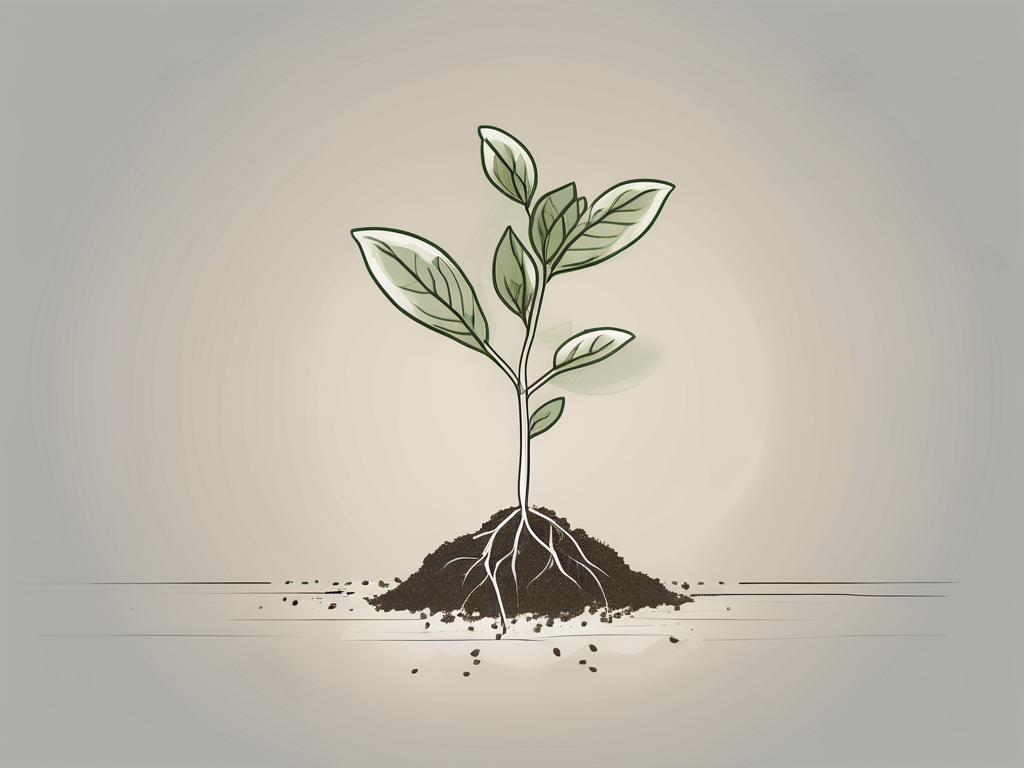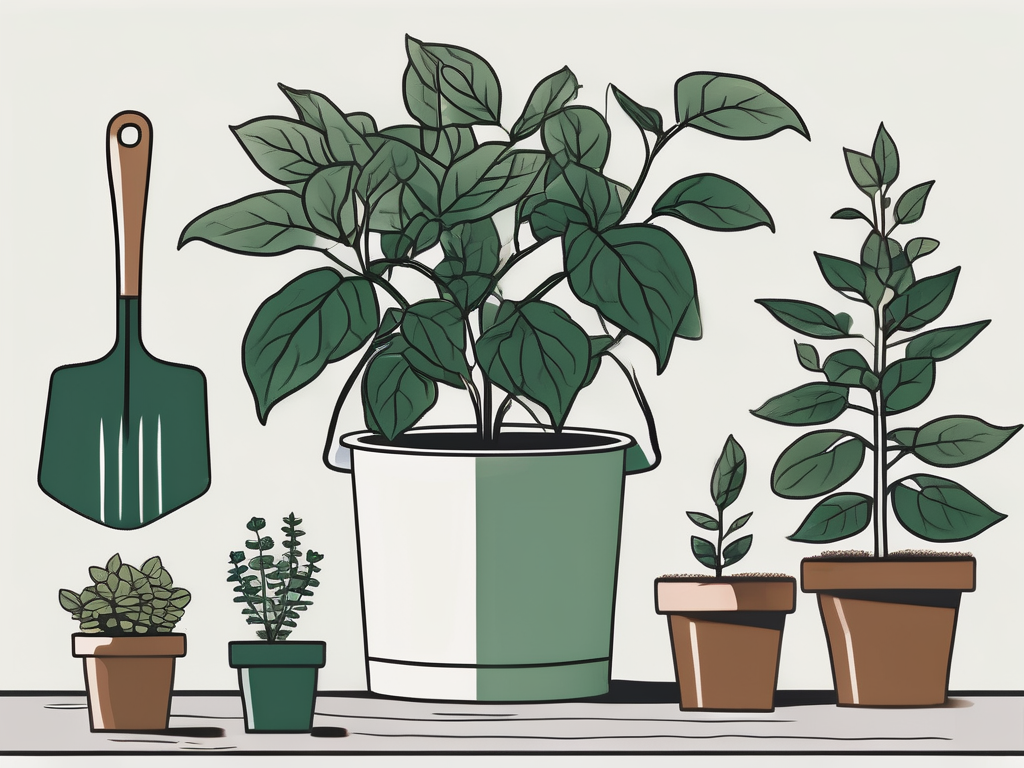
Caladiums, with their strikingly colorful foliage, have become a beloved choice for plant lovers seeking to add a splash of color to their homes. These beauties are known not just for their eye-catching leaves but also for their relatively easy propagation process. If you're looking to expand your caladium collection or share it with friends, propagating them in water is a fascinating and straightforward method.
In this guide, we'll walk through everything you need to know about propagating caladiums in water. From selecting the right cuttings to understanding the step-by-step process, you'll find all the information you need to nurture healthy new plants. So, let's get started on this exciting plant propagation journey!
Understanding Caladium Basics
Before diving into the propagation process, it helps to know a bit about caladiums themselves. These tropical plants, native to South America, are cherished for their vibrant leaves that come in a range of colors and patterns. They thrive in warm, humid environments but can also adapt to indoor settings with a little extra care.
Caladiums grow from tubers, which are similar to bulbs, and they go through a dormancy period in cooler months. This means they might lose their leaves and look a bit sad for a while, but don't worry—they're just recharging for another burst of growth. Understanding this cycle is crucial when planning to propagate, as the best time to do so is during their active growing phase.
Why propagate in water, you ask? Well, water propagation can be an easier and less messy way to start new plants. It allows you to monitor root development closely, and let's be honest, there's something magical about watching roots grow in clear water. Plus, it's a great conversation starter!
Gathering Your Supplies
To get started with water propagation, you'll need a few basic supplies. Thankfully, none of these are hard to find, and you might already have most of them at home:
- Healthy Caladium Plant: Choose a plant that's thriving, with no signs of disease or pest problems.
- Sharp Scissors or Pruning Shears: These should be clean and sharp to make precise cuts without damaging the plant.
- Clear Glass Jar or Vase: A transparent container lets you see root growth and keep an eye on water levels.
- Filtered or Distilled Water: This minimizes the risk of introducing contaminants that could harm your new plants.
- Optional Rooting Hormone: While not necessary, it can speed up the rooting process.
Once you have these supplies ready, you're all set to begin the propagation process. It's like gathering ingredients for a new recipe—exciting and full of potential!
Selecting and Preparing the Cuttings
When it comes to choosing the right part of the plant for propagation, focus on selecting healthy stems with a few leaves. Look for sections that are robust and free from any damage or discoloration. The healthier your cutting, the better its chances of thriving in water.
Here's how to prepare your cuttings:
- Find the Right Spot: Identify a mature stem with at least two or three leaves.
- Make the Cut: Use your clean scissors or shears to cut the stem just below a leaf node (the point where the leaf joins the stem). This is where new roots will emerge.
- Remove Excess Leaves: Strip away any leaves that will be submerged in water to prevent rot. Keeping only the top leaves will allow the cutting to focus on root development.
It's a bit like giving your plant a haircut—snip, trim, and it's ready for its new adventure!
Placing the Cuttings in Water
Now comes the exciting part: getting those cuttings into water! This step is straightforward, but a few tips can help ensure success:
- Fill Your Container: Pour filtered or distilled water into your glass jar or vase, filling it just enough to cover the leaf node.
- Position the Cutting: Place the cutting in the water, ensuring the node is submerged. Adjust the leaves so they're above the waterline.
- Choose a Spot: Find a warm, indirect light location for your container. Avoid direct sunlight, which can be too harsh and cause the water to overheat.
Consider this stage as setting up a comfortable home for your cutting. It's almost like arranging furniture in a new apartment, making sure everything is just right for a fresh start.
Caring for Your Water Cuttings
Once your cuttings are settled in their watery home, they'll need a bit of care and attention to encourage those roots to sprout. Here are some tips to keep them happy:
- Change the Water Regularly: To prevent stagnation and algae growth, change the water every week. This keeps it fresh and oxygenated.
- Monitor Root Growth: Roots should start to appear within a few weeks. Keep an eye out for any signs of rot, like brown or mushy stems, and remove any affected parts promptly.
- Provide Consistent Light: Ensure your cuttings continue to receive bright, indirect light. Too little light can slow root development.
Think of this phase as nurturing a pet or caring for a new gadget. It requires regular check-ins and a bit of TLC to keep things running smoothly.
Transferring to Soil
Once your cuttings have developed a healthy root system, it's time to transfer them to soil. This step helps your young plants transition from water to a more stable growing environment. Here's how to do it:
- Select a Pot: Choose a small pot with drainage holes to prevent waterlogging. A 4-inch pot is usually a good size for starters.
- Prepare the Soil: Use a well-draining potting mix. You can create your own by mixing equal parts peat moss, perlite, and compost.
- Plant the Cutting: Make a small hole in the soil and gently place the cutting in, covering the roots completely. Press the soil lightly around the base to secure it.
- Water Thoroughly: Give your plant a good drink after planting to help settle the soil and eliminate air pockets.
This stage is akin to moving from a temporary rental into a permanent home. Your plant has found its place and is ready to grow!
Adjusting to the New Environment
After transitioning to soil, your caladium might experience a little shock as it adjusts to its new environment. Don't worry—this is normal. Here's how to help it settle in:
- Maintain Humidity: Caladiums love humidity, so consider misting the leaves occasionally or placing the pot on a tray of pebbles and water.
- Avoid Overwatering: While it's important to keep the soil moist, be careful not to overwater. Allow the top inch of soil to dry out between waterings.
- Watch for Pests: Keep an eye out for common pests like aphids or spider mites. Treat any infestations promptly with insecticidal soap or neem oil.
Think of this as helping a friend settle into a new city. A little guidance and support can make all the difference!
Enjoying Your New Caladiums
With your new caladiums thriving, it's time to sit back and enjoy their beauty. Whether you choose to keep them for yourself or share them with friends, these plants are sure to bring joy and color to any space.
Consider displaying them in a spot where their vibrant leaves can be appreciated, like a living room shelf or a sunny kitchen window. Group them with other houseplants to create a lush, tropical vibe, or let them stand alone as a statement piece.
Remember, plants are like living art, constantly changing and growing. Enjoy the journey as much as the destination!
Common Challenges and Solutions
No plant journey is without its hiccups, so let's tackle some common challenges you might face while propagating caladiums in water:
- Yellowing Leaves: This could indicate overwatering or a lack of nutrients. Ensure your plant is not sitting in waterlogged soil and consider adding a diluted liquid fertilizer.
- Slow Root Growth: If roots aren't developing, check light conditions. Your plant might need more indirect light or a warmer environment.
- Rotting Cuttings: If parts of your cutting turn mushy, remove the affected sections and ensure the water is changed regularly to prevent bacterial growth.
Think of these challenges as puzzles to solve rather than setbacks. With a bit of patience and experimentation, you'll find what works best for your plants.
Sharing the Love: Gifting Caladiums
One of the joys of propagating plants is sharing them with others. Caladiums make wonderful gifts, whether for a housewarming, birthday, or just because. Here's how to share your love for these beautiful plants:
- Choose a Pretty Pot: Select a decorative pot that complements the caladium's vibrant leaves.
- Include Care Instructions: Write a simple care guide to help your recipient keep their new plant happy.
- Add a Personal Touch: Include a handwritten note or a small decorative item to make the gift special.
Think of gifting plants as sharing a piece of happiness. It's a thoughtful gesture that connects people and spreads a little green joy.
Final Thoughts
Propagating caladiums in water is a rewarding way to grow your plant collection and share these stunning plants with others. From selecting the perfect cutting to watching roots develop, the process is full of small joys and learning moments.
At Cafe Planta, we're passionate about helping you care for your plants and create beautiful spaces. If you have any questions, don't hesitate to email us or send a DM on Instagram. Whether you're new to plants or a seasoned plant parent, we're here to support your green journey. Happy planting!












